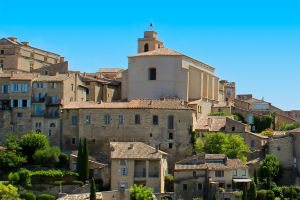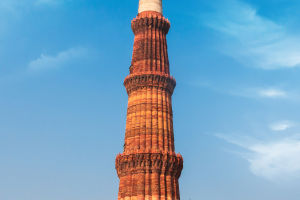The Gateway of India is more than just an architectural marvel; it is a monumental symbol of India’s resilience and independence.
Located in the bustling city of Mumbai, this striking structure was originally built to commemorate the visit of King George V and Queen Mary to India in 1911.
Standing as a triumphal arch, the monument’s eclectic Indo-Saracenic style beautifully combines Gothic Revival with Indian and muslim motifs, reflecting the blend of cultures that have influenced India’s rich history. Today, the Gateway represents India’s struggle for freedom and its eventual independence.
Historic Context
The Origins of the Gateway
The Gateway of India was constructed as a tribute to King George V’s coronation as Emperor of India. However, the structure was not complete at the time of his visit in 1911. A temporary structure made of cardboard was erected at the end of a small pier where the coronation ceremony was to take place.
Designed by the Scottish architect George Wittet, this prototype was used as a model for the final design of the monument. The Gateway’s completion took place in 1924, but it wasn’t until 1948.
The Legacy of the Gateway
Over the years, the Gateway of India has evolved to a monument of national pride and unity. Today, it stands as a powerful symbol of India's strength, resilience, and cultural identity.
The Gateway of India Today
A Major Tourist Attraction
The Gateway of India is one of Mumbai’s top tourist destinations, attracting millions of visitors from around the world. It serves not only as a historical landmark but also as a vibrant gathering place for locals, tourists, and vendors. The site is managed by the Archaeological Survey of India, which ensures its preservation and maintenance for future generations. While the Gateway is a reminder of history, it also evokes a deep sense of pride and belonging for Mumbaikars, symbolizing the city’s rich heritage and modern identity.
The Paradox of the Gateway
Though the Gateway was originally built during British rule, it has come to symbolize both India’s past and its triumphant independence. For many, the Gateway is a place of reflection on the journey from subjugation to sovereignty. The surrounding architecture further reflects this cultural blend, with Muslim, British, and Indian architectural styles all contributing to the city’s dynamic skyline.
Architectural Details: The Indo-Saracenic Style
Design and Materials
The Gateway of India is a masterpiece of Indo-Saracenic architecture, standing 26 meters tall with a 14-meter diameter dome. Built using yellow basalt stones, it is reinforced with a concrete structure, giving the monument both durability and grandeur. One of its most distinguishing features is the intricate stone latticework, known as "jali," a common characteristic of Indo-Muslim architecture. Jali, meaning "net," is a form of decoration involving perforated stone, often featuring geometric or calligraphic designs that add a unique texture and beauty to the structure.
CyArk’s Documentation Expedition
Preserving the Gateway’s Legacy
Dear Lykkers! In February 2019, CyArk, in collaboration with the Directorate of Archaeology and Museums, Government of Maharashtra, conducted an expedition to document the Gateway of India. The purpose of the project was to capture detailed data on the monument's exterior surfaces, as it had suffered from some deterioration, primarily due to salt buildup on its seaward side. This deterioration was especially notable on the side facing the Arabian Sea.
Technological Advancements in Documentation
CyArk utilized cutting-edge technology to document the Gateway’s intricate details. The expedition team employed a combination of laser scanning, photogrammetry, and drone technology to capture the monument's precise measurements and intricate designs. Equipment such as the FARO X330 laser scanner, Phase One Medium format camera, Nikon D810, and DJI Phantom 4 Pro drone helped create high-quality digital models of the Gateway. Additionally, access to the monument’s roof allowed CyArk staff to document areas that are typically difficult to reach.
The Gateway of India is not just a stunning architectural feat but a living testament to the country’s past and present. From its roots to its modern-day significance as a national icon, it continues to stand tall, welcoming people from all walks of life. As a symbol of India’s independence, cultural diversity, and resilience, the Gateway of India will remain one of Mumbai’s most beloved landmarks for generations to come.


